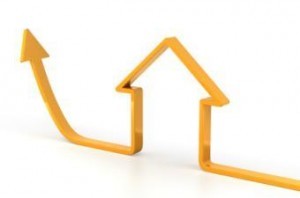 Low supply of homes coupled with lower mortgage rates could shield home price growth from the impacts of the current economic uncertainty. Still, Americans might be in for the first home price decrease in nine years.
Low supply of homes coupled with lower mortgage rates could shield home price growth from the impacts of the current economic uncertainty. Still, Americans might be in for the first home price decrease in nine years.
In June 2020 home prices nationwide, including distressed sales, increased year over year by 4.9% compared with June 2019 and increased month over month by 1% in June 2020 compared with May 2020. This is according to the most recent Home Price Insights report from CoreLogic, which provides monthly analysis that incorporates all newly released public data to provide updated results.
Home prices will increase on a month-over-month basis by 0.1% from June 2020 to July 2020, and decrease 1% on a year-over-year basis from June 2020 to June 2021, according to the CoreLogic HPI Forecast. According to the forecast, 2021 will mark the first year home prices are expected to decline in more than nine years.
“Mortgage rates hit record lows this spring, which enhanced affordability for home buyers,” said Dr. Frank Nothaft, Chief Economist at CoreLogic. “First-time buyers, and millennials in particular, have jumped at the opportunity to achieve homeownership.”
This recent strength of home sales suggests the pandemic did not deter home buyers motivated by historically low mortgage rates. Coupled with the declining supply of homes for sale, this could shield home price growth from the impacts of the current economic uncertainty.
As a result, the latest HPI Forecast reports home prices will decline just 1% between June 2020 and June 2021 with 33 states showing predicted decreases.
The CoreLogic Market Risk Indicator (MRI), a monthly update of the overall health of housing markets across the country, predicts that areas with an elevated resurgence of COVID-19 cases are at greater risk (more than 60%) of a decline in home prices over the next year.
These include Prescott, Arizona; Peoria, Illinois; Las Vegas; Lake Havasu City, Arizona; and Worcester, Massachusetts.
Despite the renewed pickup of national home price growth, the impact on local markets continues to fluctuate. For example, home prices in Philadelphia experienced an annual gain of 8.4% in June, driven by an uptick in New York City residents purchasing homes, likely in an effort to migrate from the coronavirus (COVID-19) hotspot. Meanwhile, affordability constraints in San Francisco led to an annual decline in home prices of 0.2%.
Overall, home price appreciation continues at a solid pace, “reflecting fundamental strength in demand drivers and limited for-sale inventory,” said Frank Martell, President and CEO of CoreLogic.
“As we move forward, we expect these price increases to moderate over the next twelve months,” he said. “Given the economic outlook, housing remains a bright spot for the foreseeable future.”
The entire report can be accessed through CoreLogic.

 theMReport.com Your trusted source for mortgage banking news
theMReport.com Your trusted source for mortgage banking news








